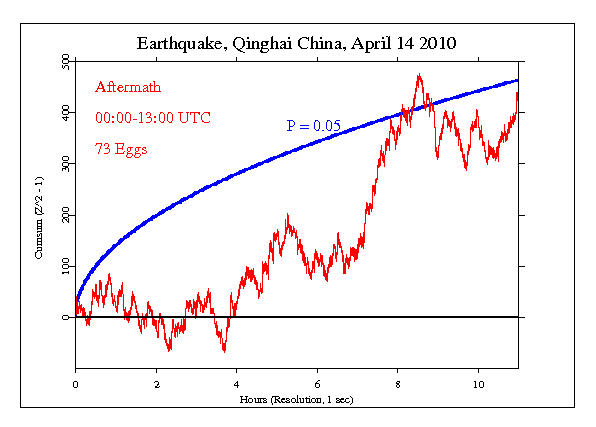Aftermath, Earthquake in Qinghai China |
|
From BBC:
The GCP event was set under some constraint because there was already a pre-set event for the 14th April for the Kumbh Mela in India, for the time 00:00 to 13:00 UTC. Since the assumptions of independence for our statistics do not permit redundancy or overlap, we could only examine an aftermath period. The China quake event was thus set for the period 13:00 to 24:00 UTC. (Ordinarily we would have a prediction that includes the main temblor and an hour or so preceding it, but that period is literally redundant with the Kumbh Mela.) The result is Chisquare 40032.854 on 39600 df, for p = 0.062 and Z=1.535. This is for a period of time beginning half a day after the main temblor. The main temblor occurred at a minute before 8:00, putting it at the very beginning of the UTC day. If we look at the whole UTC day, the Z-score is well over 2.0. We can only speculate whether the two global events, this earthquake and the huge religious gathering of millions in Haridwar, India had a complementary effect. In addition to these focused events, this time is associated with yet another potentially effective global event, namely, the Iceland volcano eruption which resulted in several days of worldwide attention to the disruptive shutdown of air travel in the UK and parts of Europe. For a look at this, we show an exploration of the Icelandic Volcano Dust Cloud effect.

It is important to keep in mind that we have only a tiny statistical effect, so that it is always hard to distinguish signal from noise. This means that every "success" might be largely driven by chance, and every "null" might include a real signal overwhelmed by noise. In the long run, a real effect can be identified only by patiently accumulating replications of similar analyses.
|